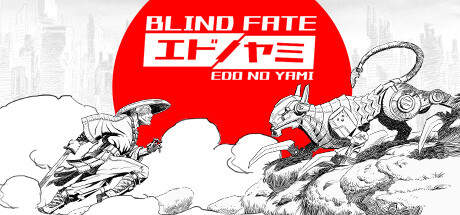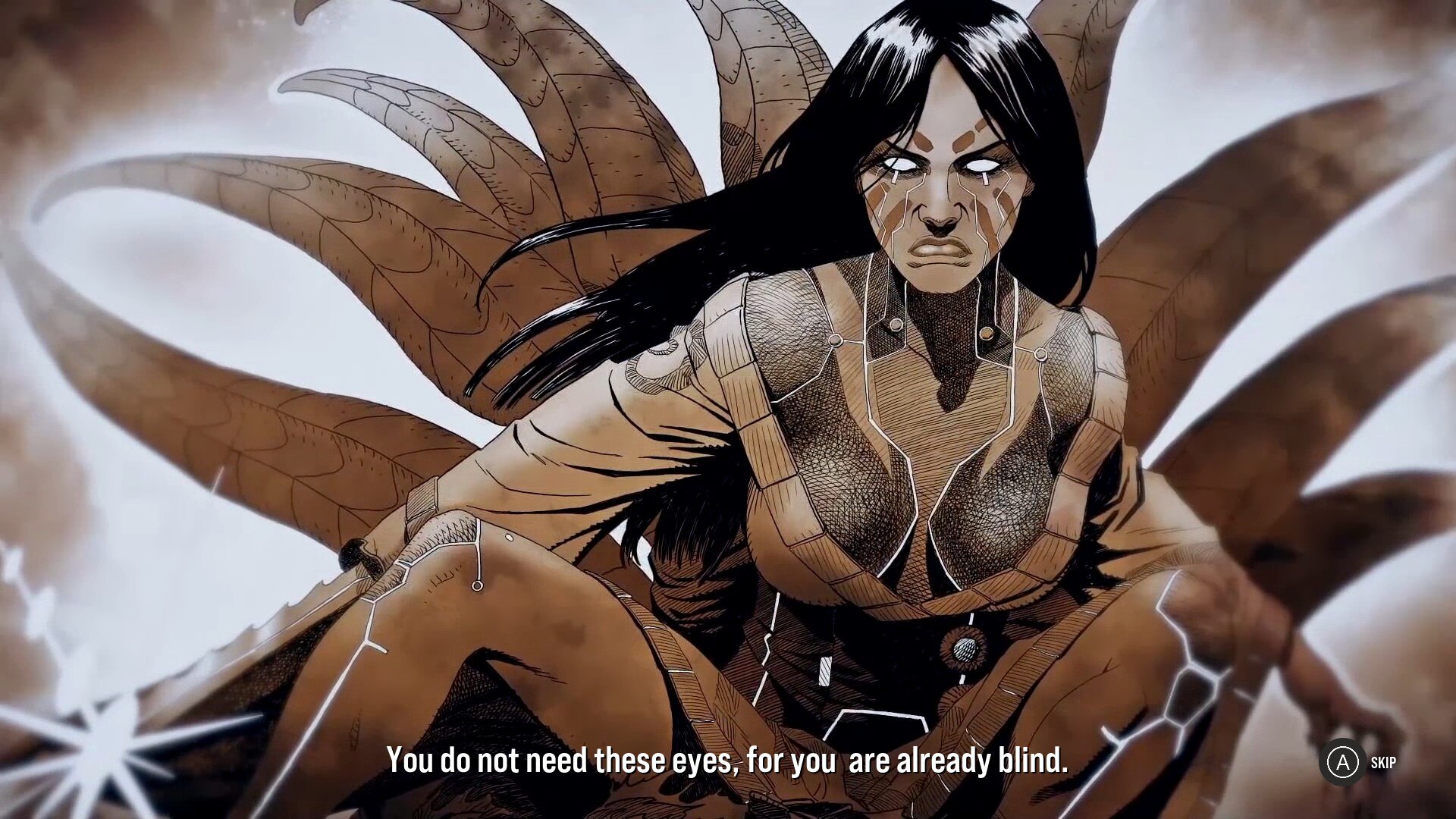
Blind Fate: Edo no Yami
Blind Fate: Edo no Yami is a story-driven, Souls-like hack and slash side scroller in 2.5D with outstanding visuals and tough-as-nails combat. Initially, this review started with the tag-line: “If you don’t like the Dark Souls iconic difficulty, this game isn’t for you.”. While this was painfully true at the moment of playing and reviewing it, things changed considerably with the release of the 1.0.2 Patch on 22 Sep 2002, which addressed a lot of the complaints regarding the difficulty and the boss fights. In my opinion, this patch improved substantially the game by making it more accessible to anyone interested in it in the slightest, and thus allowing it to reach a wider range of players.
Set in a fictional Edo period in which Japan has been overtaken by robotic versions of Japanese folklore creatures, you play a cyborg samurai whose main body parts have been replaced by machines. Yami is an experienced warrior who lost not only his limbs, but also his sight. Despite this, he never backs off from a fight, remaining true to the core values of a samurai: honor and bravery.

To compensate for his blindness, Yami employs his other senses to explore the world and to detect enemies in combat. The player can switch from normal vision to a “sound”, “smell” and respectively a ”heat” vision, each of them making different aspects of the environment visible. While the “sound” sensor is heavily used, not only because it can highlight traps, enemies approaching you (which are invisible at first and become visible as long as Yami keeps landing hits on them) and collectibles, the other two are fairly rarely used, with the “smell” sensor being the core mechanic in one boss fight only, and the “heat” vision (which is supposed to highlight exits or objects to interact with) being useful only very few times during the whole game, including another boss fight and some enemies and locations.

Blind Fate: Edo no Yami has a rather slow-paced, but precision-based combat system, in which well-timed attacks, parries and dodges are of uttermost importance. Aside from melee-ing the enemies with his Katana, Yami also has a ranged attack in the form of a cannon with 5 bullets plus 5 extra for recharge. He also has 3 medkits that can recover his lost HP, but both the ammo and the med kits are extremely scarce in the game world, therefore you’ll need to be rather stingy with using them. As such, your attacks will mostly be melee, and timing them, together with parrying and building combos will allow Yami to stun the enemies and trigger a charged blow or a finisher, delivered through a short minigame of quickly switching to a certain sensor followed by aiming your mouse / controller in a certain position, or respectively a QTE sequence that instantly kills them.

The fights can take several minutes, and normally consist of multiple waves of enemies that attack Yami in mixed ranged and melee groups. There is no way to save the game during these sequences but the levels are split into rooms / sections, with a checkpoint before each of them. Defeating enemies will award XP which can then be used to upgrade Yami’s abilities. The basic attacks do very little damage, but their final forms have considerably more impact, plus the upgraded version of dashing through enemies or stomping them will prove to be extremely useful end-game. However, in order to unlock these, a certain amount of grinding is needed.

There are 5 bosses in the game, ranging from decent to being quite frustrating mainly because of the length of the fights. Some take even a dozen minutes (that is, if you manage to survive that long) and are pretty unforgiving to mistakes. The combat mechanic of the game is overall very repetitive but the boss fights are even more so, because they’re designed so that you can place only a couple of hits before a long sequence of enemies spawning follows (or some other event that makes the boss invulnerable), and in order to defeat a boss you’ll need to correctly perform many cycles of “a couple of hits on the boss” followed by “several minutes to kill enemies or continuously dodge various attacks”. On top of that, having a very low amount of heals and an extremely limited number of bullets that you can use makes these fights even more of an endless suffering, even on the easiest of the two possible difficulty modes.

The plot is unraveled in a fragmented manner and until the end of the game, when everything is explained in one single sequence, the player is fed only bits, here and there, through dialogues or lore fragments. The story is perhaps even more cryptic prior to the final reveal if you don’t have any knowledge of Japanese mythology or you’re unable to recognize the meaning behind all the Japanese terms mentioned in the dialogues. Without spoiling too much of the plot, I can perhaps only hint at the fact that the story revolves around the idea of making a better world through science, but sacrificing humanity in the process.

In order to obtain all the achievements, one has to defeat all the bosses, unlock all the skills, complete all the mini challenges (these act as short tutorial / practice levels), and also acquire all the data and collectibles from the world. The latter two categories require not only a considerable amount of grinding (only certain enemies seem to drop a data fragment) but also constantly switching to the “sound” sensor in order to be able to see the lore fragments. Even though it’s possible to play the entire game with the “sound” sensor on, this ruins the whole experience because the blue layer of this sensor completely covers the beautifully crafted environments. One other annoying thing is that applying finishers during combat will automatically switch you to normal vision mode, thus you’ll have to repeatedly switch back to the “sound” mode after each finisher. The main story can be completed in around 10 hours (depending on your skills), and all areas can be revisited afterwards in order to gather the missing collectibles or more data about the enemies. Each area has a completion rate that indicates whether you still have things to discover there or not.

As a casual player, I initially found the game way past my comfort zone, but after the patch was released it felt much more relaxing in comparison to my prior experience – unfortunately by then I had completed the whole game, with lots of struggles. While playing in its original form, I didn’t even have the bravery to try the “Normal” mode because the “Easy” mode was already pretty much like the “Hard” mode in other games, or even more difficult than that, but then the difficulty was noticeably scaled down. What kept me going until the end was the whole atmosphere and story. The combat is what it is – repetitive and to some extent merciless (although I don’t mind the former), but the Cyberpunk-Edo environments and the whole story line managed to always compensate for my struggles. From a neon-lit replica of Tokyo, to forest pathways, rainy and foggy docks or climbing snowy mountains, the biomes of Blind Fate: Edo no Yami are all exquisitely beautiful and well-designed. The visual effects during fights are also very catchy.
Underneath the many, many frustrations of a Souls-like mechanics and difficulty, Blind Fate: Edo no Yami is a genuinely nice game that deserves to be explored, especially if you’re a fan of the genre.